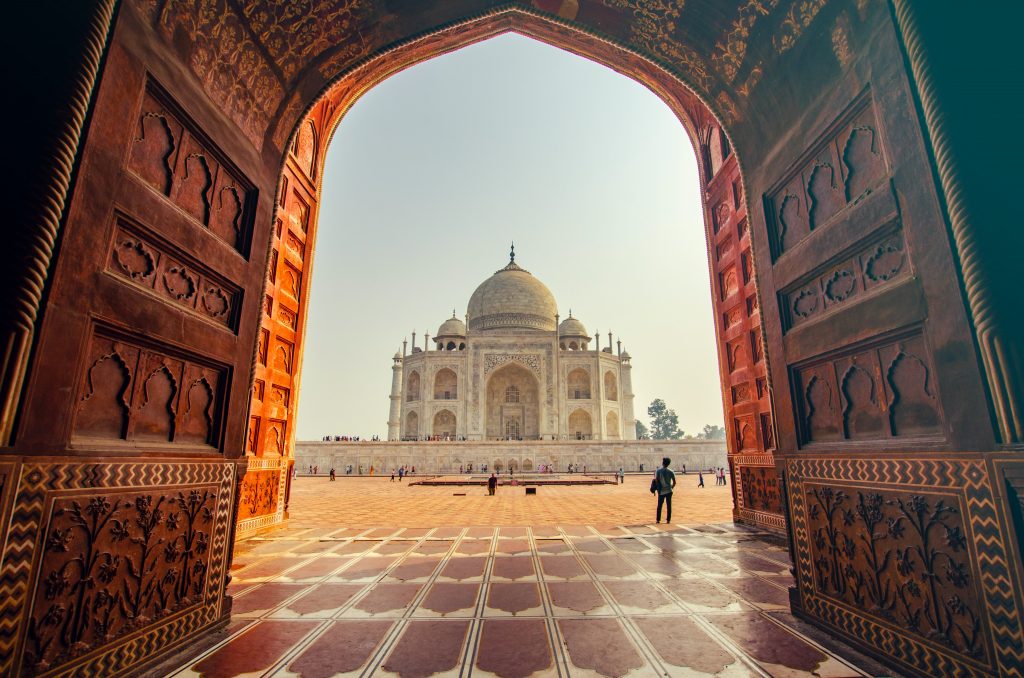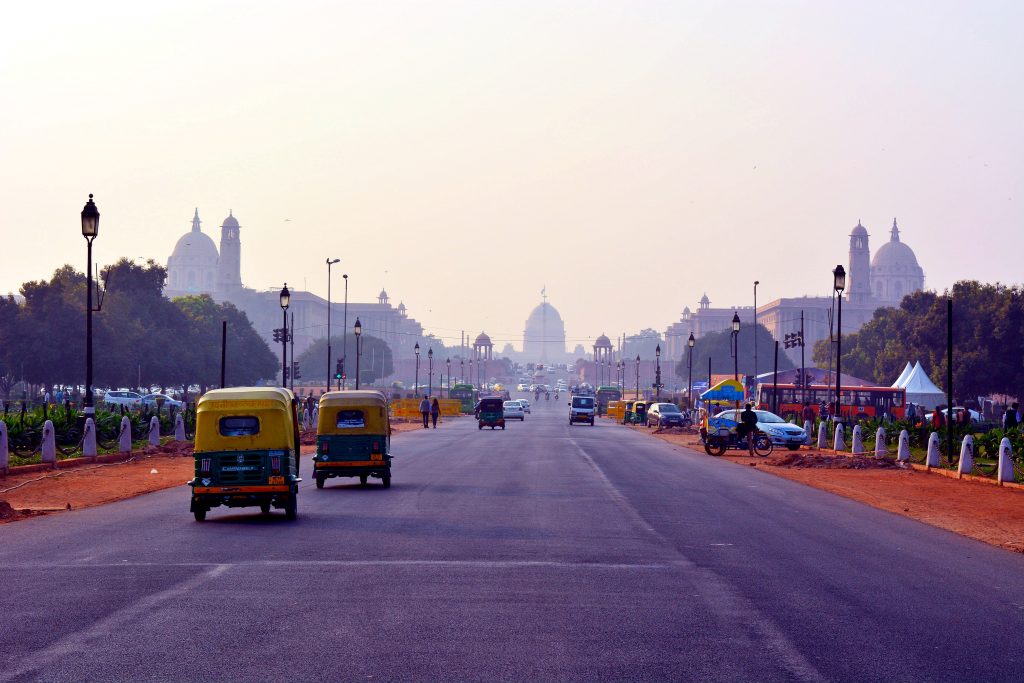AI, an accelerator of change?
This report recap is part of the AI & China: Smart Partnerships for Global Challenges project, focused on data and AI. The Atlantic Council GeoTech Center produces events, pioneers efforts, and promotes educational activities on the Future of Work, Data, Trust, Space, and Health to inform leaders across sectors. We do this by:
- Identifying public and private sector choices affecting the use of new technologies and data that explicitly benefit people, prosperity, and peace.
- Recommending positive paths forward to help markets and societies adapt in light of technology- and data-induced changes.
- Determining priorities for future investment and cooperation between public and private sector entities seeking to develop new technologies and data initiatives specifically for global benefit.
@acgeotech: Championing positive paths forward that nations, economies, and societies can pursue to ensure new technologies and data empower people, prosperity, and peace.
Summary of the Roundtables on Emerging Technologies in India – April 28 & May 12, 2020
Within the realm of the smart partnerships series, the Atlantic Council’s GeoTech Center analyzes how AI is changing societies, evaluates China’s role as a global citizen, and looks at how middle and low income countries can leverage technology for good. Supported by the Rockefeller Foundation, endeavors started last year with meetings in Paris, Brussels, and Berlin, where discussions centered around the development of artificial intelligence and its implications for geopolitics. In January and only weeks before the novel Coronavirus changed the world, the project continued with meetings in Beijing and Shanghai, focused on the domestic factors of China’s use of modern technologies. While trips to India and Rwanda were scheduled for the spring of 2020, roundtables had to be moved online, given COVID-19’s disruptive effect.
While adjusting to the new normal, the aim of our India endeavor was twofold. Focusing on the domestic domain, we partnered with the International Innovation Corps (University of Chicago Trust) and organized a digital roundtable about the applications of AI and other emerging technologies in the country’s health sector. To broaden our perspective and also address the global dimension, we furthermore partnered with the Observer Research Foundation (ORF) and organized a second roundtable on “China, India, and the geopolitics of emerging technologies” two weeks later.

Roundtable I
on AI, Data, and Health
In order to kickstart the first conversation, we asked experts from civil society, academia, corporations, and startups to discuss the following three questions. 1) What role do you see AI and emerging technologies playing for India, given the onset of the Industrial Revolution 4.0 and the country’s own development priorities? 2) Where do you think AI is currently being used in Indian healthcare and where should it ideally be applied? 3) What are the key challenges to an AI-transformation of the public health sector in India?
To fully understand the Indian context, one participant explained that “it is important to bear in mind that large parts of the country’s society and systems are not even fully digitalized yet. So, talks about broad AI implications and the industry 4.0 remain in far distance.” Nevertheless, he was quick to emphasize existing opportunities, too. Due to the significant shortage of doctors and nurses, particularly in rural areas, he thought that the application of modern technologies can help to make healthcare smarter and more accessible. “There is a very clear potential for AI to act as a capacity bridge. Today’s ratio of doctors to people is around 1 to 10.000 in India. For adequate care, this ratio should at least be ten times higher – an imbalance that inevitably leads to a large capacity gap, which could be bridged by AI systems.”
Same, but Different
Given the fact that access to healthcare remains a challenge for many in India, participants pointed out that the potential applications of modern technologies at the population level are, of course, very different compared to other countries. However, at the patient level, the similarities between countries are striking. “Current applications of AI mostly happen in diagnostics and radiology, which makes the technical use still very specialized,” one discussant explained. Another added that AI systems are not yet deployed to render decisions in India or anywhere else in the world. “AI is not yet acting as a full line of treatment, and modern technologies haven’t yet replaced the doctor-patient relationship, which makes them still more of a supplement than a replacement.”
The forward-looking debate about the circumstances in which an artificial intelligence could make decisions by itself was reminiscent of discussions in Europe and China. With rising AI capabilities — understood as applications that can learn from additional data they are fed — there is a liability question, should results of an AI program prove to be wrong. “It’s safe to assume that something will go wrong eventually, so who’s taking responsibility, if it does? Who gets taken to court, if AI makes the wrong judgment?” Solving the issues around regulatory uncertainty is a key problem for innovators and industries at large. One expert suggested that “a slightly more liberal approach towards regulation would incentivize innovation,” but he also pointed out that software in general “is not yet part of the Indian healthcare legislation.”
While societies will have to find ways to deal with the challenges surrounding the greater use of AI, the effectiveness, as well as the legitimacy, of possible policy resolutions heavily depends on their development processes. One participant warned that there are “still a lot of unresolved questions when it comes to liability, privacy, and data collection. Particularly due to a lack of transparency and preexisting system biases, debates around settling policy questions aren’t taking place in a truly consultative and inclusive format, which undermines the entire process.” She continued by predicting that, unless the situation changes significantly, “we are going to see a lack of [public] trust and accountability when it comes to modern technologies and their exclusive applications, particularly in the health sector.”
Though many of these questions are somewhat universal, the Indian environment is defined by circumstances that set it apart from other parts of the world. Unsurprisingly, and like other developing economies, the biggest issue facing India is one of insufficient funding. In introducing the common notion that “AI applications, unfortunately, are only as helpful as the money they save,” one participant shed light on the systemic challenges the country is facing. “The reason why AI is being adopted is usually cost efficiency, which creates far less incentive for India given the tremendous availability of cheap labor.” Generally, experts agreed that there is “no real financial incentive to apply AI in the field because healthcare doesn’t really make money in India.”
Some even went one step further, arguing that “if the value of a human life is really low in a society, there’s little incentive to save it. In India, there’s no real business model for population health management. Until now, we only cared about disease medicine, which reduces that development of preventive measures and gives so-called wellness medicine little chance.” A situation in which AI applications do not pay-off encourages Indian start-ups to deliberately try to access foreign markets due to the low profit margins at home. “In fact, the only reason for them to even maintain a presence in India is patriotism,” one participant explained. The money question also matters in terms of accessibility. Experts warned that “the public healthcare system in India is very much broken, and quality of care heavily depends on financial resources. With modern technologies improving diagnostics as well as treatments, it will be mostly private hospitals that have the capacity and infrastructure to use AI solutions. That’s why we could see a further increase in inequality.”

Modern Technologies for Social Good
Bearing in mind the accessibility question, the second part of the roundtable focused on how AI can be a driver for social good, nevertheless. Participants suggested a number of ways modern technologies could improve the existing quality of care, for instance by “increasing the exposure of doctors to different cases through reinvented training methods.” Furthermore, a representative from the private sector pointed out that “roughly 80% of all medical cases are simple check-ins, where there is an opportunity to automate, so that doctors have more capacity for the difficult cases.” AI solutions could therefore solve the availability problem of professional talent, particularly in rural areas that often lack sufficient numbers of doctors.
Talking about India’s handling of the novel coronavirus, one discussant alluded to the potentially crucial role of AI in preparedness. “There is a lot of focus on the virus, but very little thinking about secondary diseases. Modern technologies could help with preparedness, logistics, as well as hospital occupation planning.”
When it comes to non-government actors (NGOs), the predicament of AI adoption is rather challenging. “Often, NGOs are supported with technical know-how, but only the big ones have the capacity to move a project forward,” another participant said. Prompting broad agreement in the group, he added, “it has to be the government who plays a major role. Due to the lack of profitability, social good is exactly the topic that falls through the holes too many times. The government, however, should be concerned about public wellbeing and put the money where its mouth is.” Participants also suggested that, in the meantime, bigger civil society organizations, philanthropic institutions, and corporate social good initiatives could help fill the gap. Asked about practical examples, one expert highlighted the necessity of developing more research on AI development. “It is possible to combine research as well as its applications for social good. Researchers need to go out in the field, because understanding the challenges that healthcare workers face is crucial, if we talk about the practicality of AI applications.”
The Question of Data
According to the roundtable participants, a lack of useful data is often the norm in India. “In some educational institutions, engineers even train with data from the US or other countries because there are no domestic data sets, a problem that is intensified by the multilingual circumstances, which make the collection and application really difficult.” The expert continued by highlighting possible solutions: “On the one hand, developers of AI need to think how they can add value with their systems, and, on the other hand, it is the government that really needs to figure out a way for healthcare providers to safely use and apply open source data.”
Along with missing financial incentives and logistical challenges, the lack of available data is probably the biggest obstacle to the development and application of AI and other modern technologies in India. But wherever there are challenges, opportunities arise, too. “Moving forward, much depends on the quality of [the] partnerships and the financial capabilities of the partners,” one discussant explained. “The government is a major player here, both on a population as well as on an individual level. Right now, talent does not want to join government hospitals because of the lack of financial incentives. But once people stop thinking all of this is just a hype and identify the revenue-providing functions of healthcare, things will change.”
In addition to building more sustainable monetization models for AI applications, participants agreed that markets and, above all, state capacity are key. “India’s low levels of state and market capacity create huge problems for policy and regulatory affairs. For us to have a sustainable AI environment, we need to develop state capacity.” Subsequent suggestions for how to build it were rather wide-ranging: from limited liability options to the development of an ethics framework to clearer regulations for all market participants and better training opportunities for talent, the laundry list of possible improvements is long. Signs of hope, however, are emerging. One participant knew of companies that “are opening up their platforms to make knowledge publicly accessible.” Another expert highlighted India’s special status as a vaccination and genetics research capital. “There is tremendous opportunity to climb up the value chain and do AI-based discovery. Especially the Pharma industry has a lot to unleash, and we already see increases in venture-capital investments.” Generally speaking, participants were hopeful that, irrespective of all the challenges mentioned, India has a lot of potential given its data pool, existing AI solutions, and ample scientific talent, if channeled correctly.
“It is certainly not all doomsday,” one participant joked, and people all around the world have extremely high expectations when it comes to AI. “Maybe, just maybe, we expect too much of modern technologies, especially with regard to potential healthcare applications. Of course, AI could add tremendous value when it comes to services etc., but similar to other fields, technologies need to develop first. We didn’t just wake up with a self-driving Tesla, but it took a while till we got an autonomous vehicle — hence we shouldn’t expect autonomous healthcare immediately.” He warned that it would certainly be premature and ill-advised to believe that artificial intelligence will solve all of our problems.

Roundtable II on China, India, and the Geopolitics of Emerging Technologies
For the second roundtable on the geopolitical angle of emerging tech, international researchers, European bureaucrats, and American policy experts were joined by representatives from the Indian government, civil society, and the private sector to address the following three questions: 1) How should India go about harmonizing its domestic imperatives of technology-driven growth for all and protecting national security with its drive to build equitable emerging technology norms at international forums? 2) What are the areas of convergence and divergence for India, Europe, the United States, and China on AI, and what would deeper engagement look like? 3) What activities do Indian representatives want in terms of education for the public, entrepreneurs, or policymakers regarding data and AI, and how do they see the relationship with China developing?
The conversation started with one participant highlighting India’s aspiration to be always on the forefront of technological development. Particularly in the last few years, “we saw significant advancements made in the field of emerging technologies and applying them for economic development, such as digital banking and payment systems.” Like other countries, privacy and security issues remain a constant companion. “For a long time, technology was regarded as a neutral actor. However, that notion starts to change, particularly with regard to privacy and national security concerns.” Given the reemergence of great power competition, one expert suggested the potential reinstatement of export-import control mechanisms as well as acquisition oversight. “Such measures will be of major importance once technology can no longer be seen as a neutral player. We need to be innovative on how to do that, maybe through partnerships of like-minded countries.” — an idea that recurred throughout the entire discussion and served as a starting point for comprehensive debates.
As they did at the meetings in Europe and China, researchers worried about the speed at which modern technologies are developing. “Do we really want to let developers move ahead, or do we want social scientists and regulators to be able to catch up before things get completely out of hand?” one participant asked. Others agreed and pointed out that “runaway-future-tech” all around the world is a problem, from America’s Silicon Valley to China’s Shenzhen to India’s Mumbai. According to them, regulations will need to be more sophisticated than in the past, if citizens are to be protected. “The impact of technologies on societies around the world right at this moment will be very critical and for sure accelerated by the ongoing pandemic. This is an inflection point, and the decisions we take today will have significant impact on the future,” a think tank representative warned.
Respective interdependencies merit particular attention. “With AI, data drives technological development and vice versa, creating huge correlations. The better the data, the better the technology and potential applications,” one speaker explained. “That’s why many countries are changing their systems to accommodate and incentivize data collection and technology development. India has the advantage of having large data availability, and we can use it to develop technology, though regulation changes need to be taken into consideration to make that process more efficient.” Others agreed and highlighted the need to streamline regulatory efforts in both a domestic and international setting. “We need way more coordination on the state level, between ministries, authorities, as well as non-government actors. Proposing legislation to the United Nations is great, but India itself should first adopt such necessary regulations at home.” Some suggested, for example, that individuals should be able to inform authorities about security breaches without fearing prosecution.
More generally speaking, experts highlighted the need for transparency in order to increase the legitimacy of respective legislation. “Aiming to involve non-government actors in the process, there once was a policy that regulatory proposals were made public and available for comment, subsequently adopting some of the language based on feedback — a promising multi-stakeholder approach that would enable India to work together with Europe and the United States. Most certainly, transparency brings huge benefits because people start trusting and feel that their voices matter — ultimately that’s what democracies should be all about, right?”
Tech in a Bipolar World
International participants further alluded to the strategic importance of India. “With emerging great power rivalry, India is playing a key role based on its decision which side to join. If it goes with China, it will be almost three billion people shaping the future of the internet. That’s why partnerships among like-minded countries are key to define guidelines for companies operating in the field.” The notion received varying reactions. On the one hand, as at previous roundtables, looming bipolarity is a great concern for many researchers. “India struggles to manage a bipolar world, and investment decisions should not be seen as a binary choice, though contextualized based on respective technology platforms. Therefore, India is advancing a policy of cyber sovereignty, to navigate between the US and the Chinese model.” On the other hand, some disagreed and held the opinion that India can no longer sit on the fence by saying it wants to talk and work with everyone. “It’s time to take specific action, and it’s most certainly not China’s side we are going to land on.”
Much time was spent on evaluating the ever-changing Sino-Indian relationship. One participant used a three-phase model to explain the challenging environment. Phase one portrayed a time in which India’s relationship with the digital space in and outside the country was rather limited. Until about 2014, China didn’t really matter in that regard because India wasn’t clear on its own digital strategy. In the second phase, however, circumstances started to change. “Money from the big neighbor was welcomed, despite suspicion and potential mistrust. Chinese companies used that time to increase their investments and strategic positions, all the while widening their influence in Indian tech unicorns. We are now seeing the start of phase three in which suspicion grows significantly.” With India now containing more than 650 million internet users as well as its own digital platforms, money coming in, particularly from China, is regarded with caution and must be “cleared” by the government, he continued. “Be it software or hardware, most attractive offers have long come from China, though, today, a sophisticated distrust has developed when it comes to Chinese digital supply chains.” An opposing camp, however, was quick to add that India has never favored a black-and-white approach, but rather embraces different shades of grey. “India doesn’t want to be either on the US or on the Chinese side, but it wants to follow its own ‘cyber sovereignty’ model based on the country’s own domestic priorities and ecosystems.”
Another expert reported that on the international level, and in the Global Conference on CyberSpace (GSCS) in particular, there is broad consensus with the United States and Europe on ideas about safeguarding the core of the internet. “Irrespective of differences, no one argued for limiting cyberspace all together or attacking the actual functioning of the internet.” She also explained, though, that policies must not only come from the perspective of liberal democracies . “Cyber stability needs to be a global endeavor, taking into consideration different perspectives from different countries. Emphasizing technology for good, be it, for example, in healthcare, education, agriculture, or infrastructure might give the global AI competition a very different spin, mitigating the rivalry aspect.” Fitting that narrative, participants emphasized that India’s AI approach should be inclusive, highlighting “that all countries should benefit from modern technologies and achieve the development goals.” One way to establish broader international agreements would be to focus on safeguarding electoral systems, irrespective of their “democratic nature,” another participant added.
However, the general belief was that compromise with China will, in any case, be challenging, given ongoing tensions and obvious security concerns. “For China, India is the closest to a competitor in Asia, which will be making cooperation more difficult. Offers from the People’s Republic usually come with strings attached, as we see with their One Belt, One Road Initiative. If India had to choose, it would first try to side with Europe and then maybe the US, though the China angle will make it difficult. India shouldn’t put all its eggs in one basket but rather need to be open minded, all the while seeking regional and international collaborations.” Particularly interesting in that regard is India’s relationship to ASEAN countries, a group of states that has been very successful at proposing common positions at the United Nations Group of Governmental Experts on Information Security (UNGGE). “If India can find a common position with ASEAN states, it would increase its standing and also improve bilateral relationships.” According to one expert, fields of potential collaboration range from cyber to surveillance norms as well as data sharing agreements, especially when it comes to COVID-19 and the many measures taken against it. “I see a huge potential for big Indo-Pacific powers to come together and shape the debates.”

The Importance of Data Ownership
Overall, participants agreed that there is still a lot of work to do, both on the international as well as domestic levels. “Regulations are often not consistent with each other, despite the magnitude of the problem. If we want to apply data and AI for future social development, we need laws that are inter-relatable. The requirement of the time is that G-20 or like-minded countries come together and create a broader framework while improving their respective systems at home.” One interesting suggestion that India is proposing at the international level is an adjustment of respective jurisdictions. “Alluding to the universal right of privacy, international law should allow primary and secondary data ownership, irrespective of geographical location.”
Others were keener to focus on the domestic dimension first, before engaging on the international stage. “AI is obviously not a solution to all of India’s problems, but the country should leverage modern technologies to facilitate better policies. What matters are real programs that can address existing issues and generate better lives.” These processes will require much private sector engagement and coordination. “We need to look at how we can incentivize domestic cooperation and reduce distrust, with a focus on patterns. Unfortunately, there is still a lack of cooperation between startups, the government, academia, and big businesses. It will be key to bridge that with open source data, academic research, and implementation strategy.” Moving forward, participants highlighted the need for funding startups to further build capacity, especially regarding the emergence of AI, quantum computing, and 5G. “There is no question that it will be difficult to restrict, control, or guide the powerful march of technology, but what India needs to do right now is to plug the gaps in AI chain. For example, when it comes to semi-conductor manufacturing. AI will ensure that our per capita consumption of semi-conductors will go up multifold, and basic ICT hardware manufacturing in India will ensure that we emerge as a key player in ICT supply chain over the next decades.”
The future, of course, is uncertain, and many questions remain unanswered. One participant mentioned, for instance, that “alongside the pandemic, we are also suffering from an info-demic, meaning a whole new ecosystem of falsehoods, which is generated by digital platforms.” His points alluded to the fact that today private companies can censor authorities by taking down content from representatives of a sovereign government, “an ability that represents a paradigm shift and raises questions on how we are handling the legality of it in the future? Can we criticize China for their censorship, if we do the same, irrespective of whether content is true or not?” The rhetorical question introduced a philosophical discussion, in addition to elaborations of the legal, technical, and political aspects surrounding censorship. Overall, the roundtable indicated a long path forward, and Indian experts are just beginning to think about the macro-designs of AI governance nationally and internationally.
The digital meetings with India were part of the Atlantic Council’s ongoing endeavor to establish forums, enable discussions about opportunities and challenges of modern technologies, and evaluate their implications for society as well as international relations — efforts that are championed by the newly established GeoTech Center. Prior to its formation and to help lay the groundwork for the launch of the Center in March 2020, the Atlantic Council’s Foresight, Strategy, and Risks Initiative was awarded a Rockefeller Foundation grant to evaluate China’s role as a global citizen and the country’s use of AI as a development tool. The work that the grant commissioned the Atlantic Council to do focused on data and AI efforts by China around the world, included the publication of reports, and the organization of conferences in Europe, China, India, and Africa. At these gatherings, international participants evaluate how AI and the collection of data will influence their societies, and how countries can successfully collaborate on emerging technologies, while putting a special emphasis on the People’s Republic in an ever-changing world. Summaries of the roundtables in Paris, Brussels, Berlin, Beijing, and Shanghai have been published already.

The GeoTech Center champions positive paths forward that societies can pursue to ensure new technologies and data empower people, prosperity, and peace.

